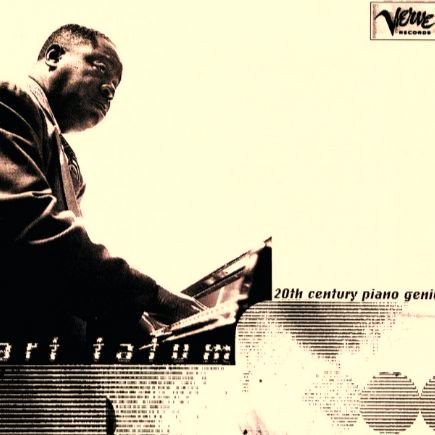D’un air populaire à une pierre angulaire du jazz moderne
Genèse d’une chanson promise à un destin singulier
Composée en 1930 par Edward Heyman, avec des paroles signées Robert Sour, Frank Eyton et Johnny Green, Body and Soul est d’abord conçue pour l’actrice et chanteuse britannique Gertrude Lawrence. Rapidement reprise par Libby Holman dans la revue Three’s a Crowd, la chanson gagne ensuite le grand écran à travers le film Body and Soul, porté par John Garfield. À l’origine, rien ne distingue encore ce thème d’une autre ballade populaire de l’époque. Sa trajectoire va pourtant basculer, faisant de ce morceau une référence centrale de l’histoire du jazz.
1939: une relecture qui change le cours du jazz
Le véritable tournant intervient en 1939 avec l’enregistrement révolutionnaire du saxophoniste ténor Coleman Hawkins. Délaissant largement la mélodie originale, Hawkins construit une improvisation fondée presque exclusivement sur la structure harmonique du morceau. Ce geste audacieux rompt avec les conventions du swing et ouvre une voie nouvelle, annonciatrice de l’esthétique bebop. Body and Soul cesse alors d’être seulement une chanson: elle devient un laboratoire harmonique et un terrain d’expérimentation pour des générations de musiciens.
Une lecture magistrale par Art Tatum
Parmi les innombrables versions du morceau, celle enregistrée en public le 26 juillet 1941 au Gee-Haw Stables de New York par Art Tatum occupe une place à part. Accompagné du bassiste Chocolate Williams, le pianiste livre une interprétation souvent considérée comme l’une des plus extraordinaires jamais captées de Body and Soul. Le contexte du club, loin des contraintes du studio, permet à Tatum de déployer librement son art, offrant un témoignage rare de sa créativité en situation réelle.
Virtuosité architecturale et liberté expressive
Dès l’exposition du thème, Art Tatum impose une approche singulière. Les phrases s’étirent avec une souplesse quasi vocale, les accords se densifient, et la mélodie semble se recomposer à chaque instant. La ligne de basse de Chocolate Williams, à la fois discrète et solidement ancrée, soutient ce discours sans jamais le contraindre. Tatum transforme alors le standard en un véritable édifice improvisé: cascades d’arpèges, modulations inattendues, fragments du thème réagencés et éclats virtuoses s’entrelacent dans une architecture d’une cohérence remarquable.
De una canción popular a una piedra angular del jazz moderno
Génesis de una canción destinada a un destino singular
Compuesta en 1930 por Edward Heyman, con letras firmadas por Robert Sour, Frank Eyton y Johnny Green, Body and Soul fue concebida inicialmente para la actriz y cantante británica Gertrude Lawrence. Pronto retomada por Libby Holman en la revista Three’s a Crowd, la canción llegó después a la gran pantalla a través de la película Body and Soul, protagonizada por John Garfield. En sus inicios, nada distinguía aún este tema de otra balada popular de la época. Sin embargo, su trayectoria daría un giro decisivo, convirtiendo la pieza en una referencia central de la historia del jazz.
1939: una relectura que cambia el curso del jazz
El verdadero punto de inflexión se produce en 1939 con la grabación revolucionaria del saxofonista tenor Coleman Hawkins. Al apartarse en gran medida de la melodía original, Hawkins construye una improvisación basada casi exclusivamente en la estructura armónica del tema. Este gesto audaz rompe con las convenciones del swing y abre un nuevo camino, precursor de la estética bebop. Body and Soul deja entonces de ser solo una canción: se convierte en un laboratorio armónico y en un terreno de experimentación para generaciones de músicos.
Una lectura magistral de Art Tatum
Entre las innumerables versiones del tema, la grabada en directo el 26 de julio de 1941 en el Gee-Haw Stables de Nueva York por Art Tatum ocupa un lugar singular. Acompañado por el contrabajista Chocolate Williams, el pianista ofrece una interpretación considerada a menudo como una de las más extraordinarias jamás registradas de Body and Soul. El contexto del club, lejos de las limitaciones del estudio, permite a Tatum desplegar su arte con total libertad, ofreciendo un testimonio excepcional de su creatividad en situación real.
Virtuosismo arquitectónico y libertad expresiva
Desde la exposición del tema, Art Tatum impone un enfoque singular. Las frases se estiran con una flexibilidad casi vocal, los acordes se densifican y la melodía parece recomponerse a cada instante. La línea de bajo de Chocolate Williams, a la vez discreta y sólidamente anclada, sostiene el discurso sin constreñirlo. Tatum transforma así el estándar en un verdadero edificio improvisado; cascadas de arpegios, modulaciones inesperadas, fragmentos del tema reorganizados y destellos virtuosos se entrelazan en una arquitectura de coherencia notable.
Da canzone popolare a pilastro del jazz moderno
Genesi di un brano destinato a un percorso singolare
Composta nel 1930 da Edward Heyman, con testi di Robert Sour, Frank Eyton e Johnny Green, Body and Soul nasce inizialmente per l’attrice e cantante britannica Gertrude Lawrence. Ripresa rapidamente da Libby Holman nella rivista Three’s a Crowd, la canzone approda poi sul grande schermo con il film Body and Soul, interpretato da John Garfield. All’inizio, nulla distingue ancora questo tema da un’altra ballata popolare dell’epoca. La sua traiettoria subirà però una svolta decisiva, facendo del brano una riferimento centrale nella storia del jazz.
1939: una rilettura che cambia il corso del jazz
La svolta avviene nel 1939 con l’incisione rivoluzionaria del sassofonista tenore Coleman Hawkins. Allontanandosi in larga parte dalla melodia originale, Hawkins costruisce un’improvvisazione basata quasi esclusivamente sulla struttura armonica del brano. Questo gesto audace rompe con le convenzioni dello swing e apre una nuova strada, anticipatrice dell’estetica bebop. Body and Soul smette così di essere soltanto una canzone: diventa un laboratorio armonico e un terreno di sperimentazione per generazioni di musicisti.
Una lettura magistrale di Art Tatum
Tra le innumerevoli versioni del brano, quella registrata dal vivo il 26 luglio 1941 al Gee-Haw Stables di New York da Art Tatum occupa un posto di rilievo. Accompagnato dal contrabbassista Chocolate Williams, il pianista offre un’interpretazione spesso considerata una delle più straordinarie mai incise di Body and Soul. Il contesto del club, lontano dai vincoli dello studio, consente a Tatum di esprimere liberamente il proprio linguaggio, offrendo una rara testimonianza della sua creatività in situazione reale.
Virtuosismo architettonico e libertà espressiva
Fin dall’esposizione del tema, Art Tatum impone un approccio singolare. Le frasi si distendono con una flessibilità quasi vocale, gli accordi si infittiscono e la melodia sembra ridefinirsi di momento in momento. La linea di basso di Chocolate Williams, discreta e solidamente ancorata, sostiene il discorso senza mai costringerlo. Tatum trasforma così lo standard in una vera architettura improvvisata; cascate di arpeggi, modulazioni inattese, frammenti del tema riorganizzati e slanci virtuosistici si intrecciano in una costruzione di notevole coerenza.
From a popular tune to a cornerstone of modern jazz
The genesis of a song destined for a singular path
Composed in 1930 by Edward Heyman, with lyrics by Robert Sour, Frank Eyton, and Johnny Green, Body and Soul was initially written for British actress and singer Gertrude Lawrence. Quickly taken up by Libby Holman in the revue Three’s a Crowd, the song later reached the big screen through the film Body and Soul, starring John Garfield. At first, nothing set this theme apart from other popular ballads of the period. Its trajectory would nevertheless take a decisive turn, establishing the piece as a central reference in jazz history.
1939: a reinterpretation that reshaped jazz
The true turning point came in 1939 with the groundbreaking recording by tenor saxophonist Coleman Hawkins. Largely abandoning the original melody, Hawkins built an improvisation almost entirely on the song’s harmonic structure. This bold gesture broke with swing conventions and opened a new path, anticipating the bebop aesthetic. Body and Soul thus ceased to be merely a song: it became a harmonic laboratory and a field of experimentation for generations of musicians.
A masterful reading by Art Tatum
Among the countless versions of the piece, the live recording made on July 26, 1941 at the Gee-Haw Stables in New York by Art Tatum holds a singular place. Accompanied by bassist Chocolate Williams, the pianist delivers a performance often regarded as one of the most extraordinary ever captured of Body and Soul. The club setting, far removed from studio constraints, allows Tatum to unfold his art with complete freedom, offering a rare testimony to his creativity in a live context.
Architectural virtuosity and expressive freedom
From the very statement of the theme, Art Tatum asserts a distinctive approach. Phrases stretch with an almost vocal flexibility, chords grow denser, and the melody seems to be constantly reshaped. Chocolate Williams’s bass line, discreet yet firmly grounded, supports the discourse without ever constraining it. Tatum thus transforms the standard into a fully realized improvised structure; cascading arpeggios, unexpected modulations, reassembled fragments of the theme, and virtuosic flashes intertwine within a remarkably coherent musical architecture.


